Chapter 16
Gene Expression
By Boundless
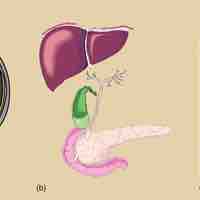
Gene expression is a highly complex, regulated process that begins with DNA transcribed into RNA, which is then translated into protein.

Prokaryotes regulate gene expression by controlling the amount of transcription, whereas eukaryotic control is much more complex.
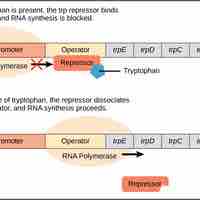
The trp operon is a repressor operon that is either activated or repressed based on the levels of tryptophan in the environment.
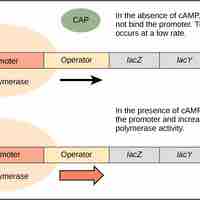
When glucose levels decline in E. coli, catabolite activator protein (CAP) is bound by cAMP to promote transcription of the lac operon.
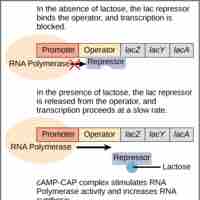
The lac operon is an inducible operon that utilizes lactose as an energy source and is activated when glucose is low and lactose is present.
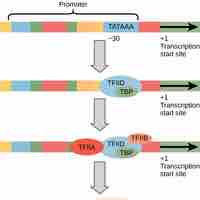
When transcription factors bind to the promoter region, RNA polymerase is placed in an orientation that allows transcription to begin.
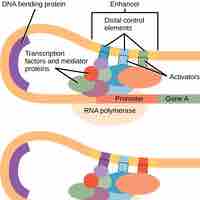
Enhancers increase the rate of transcription of genes, while repressors decrease the rate of transcription.

Both the packaging of DNA around histone proteins, as well as chemical modifications to the DNA or proteins, can alter gene expression.
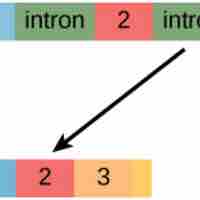
RNA splicing allows for the production of multiple protein isoforms from a single gene by removing introns and combining different exons.
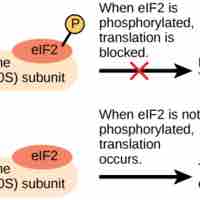
The first step of translation is ribosome assembly, which requires initiation factors.

A cell can rapidly change the levels of proteins in response to the environment by adding specific chemical groups to alter gene regulation.
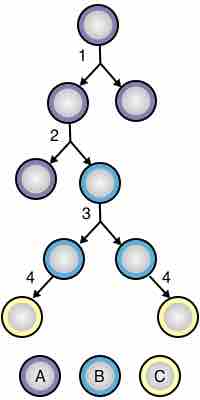
Symmetric division maintains stem cell lines and asymmetric division yields differentiated cells.
Cellular differentiation occurs so cells can specialize for different functions within an organism.
Cellular differentiation, a necessary process in development and maintenance of multicellularity, is regulated by transcription factors.
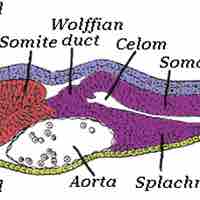
Animal bodies have three axes for symmetry (lateral-medial, dorsal-ventral and anterior-posterior) which are established in development.
During development it is critical that specific gene expression patterns are established to signal and differentiate the cells appropriately.
Cell migration is necessary for development and maintenance of multicellularity, and occurs through varying mechanisms.
Programmed cell death describes the death of a cell through a highly regulated process, and serves many functions in an organism.

Cancer, a disease of altered gene expression, is the result of gene mutations or dramatic changes in gene regulation.
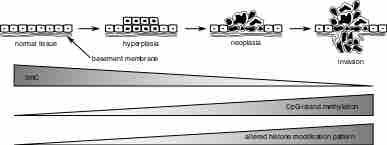
Common in cancer cells, silencing genes, which occur through epigenetic mechanisms, include modifications to histone proteins and DNA.
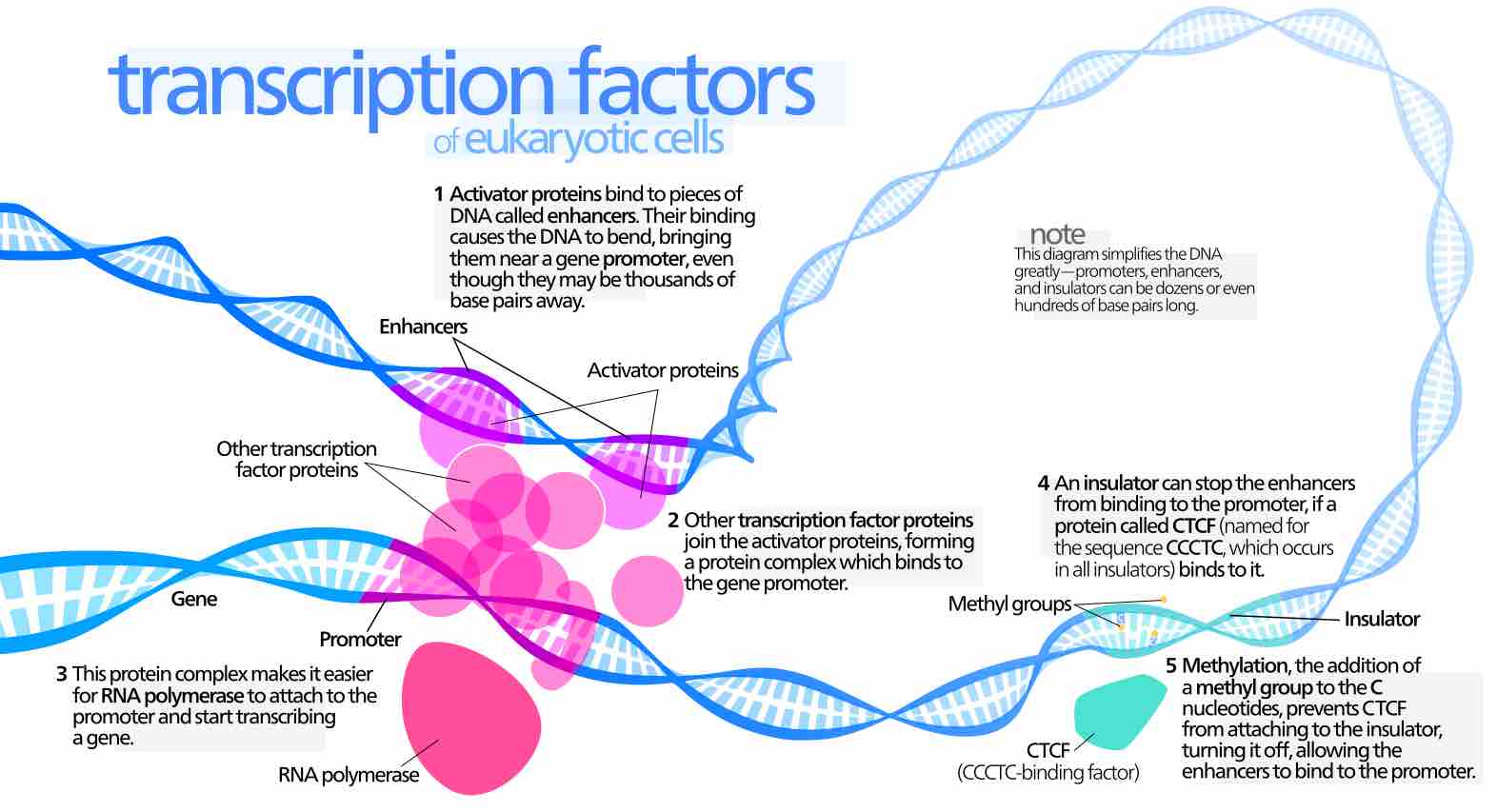
Increased transcriptional activation of genes result in alterations of cell growth leading to abnormal gene expression, as seen in cancer.
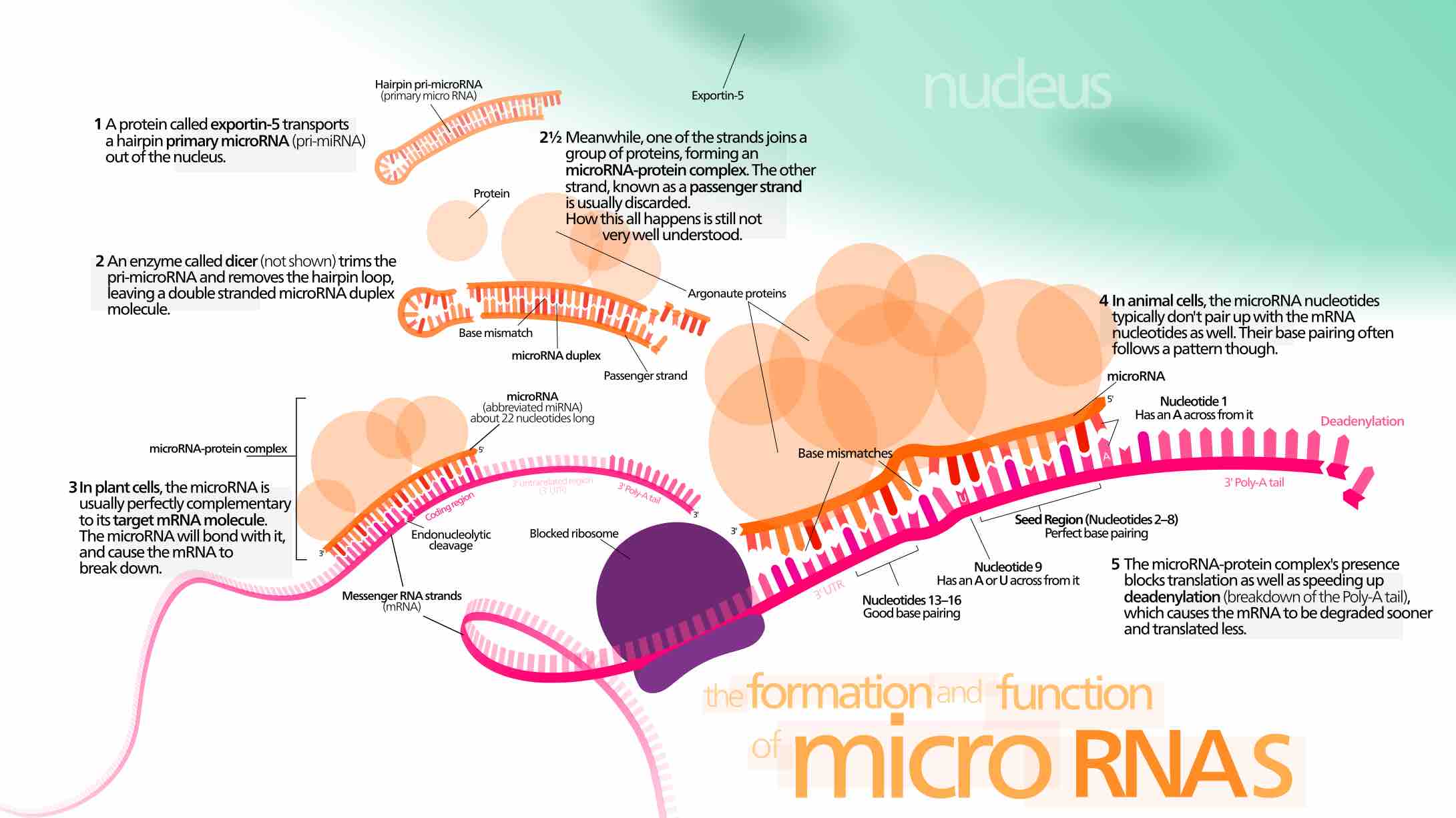
Modifications, such as the overexpression of miRNAs, in the post-transcriptional control of a gene can result in cancer.
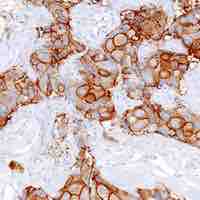
Cancer can arise from translational or post-translational modifications of proteins.